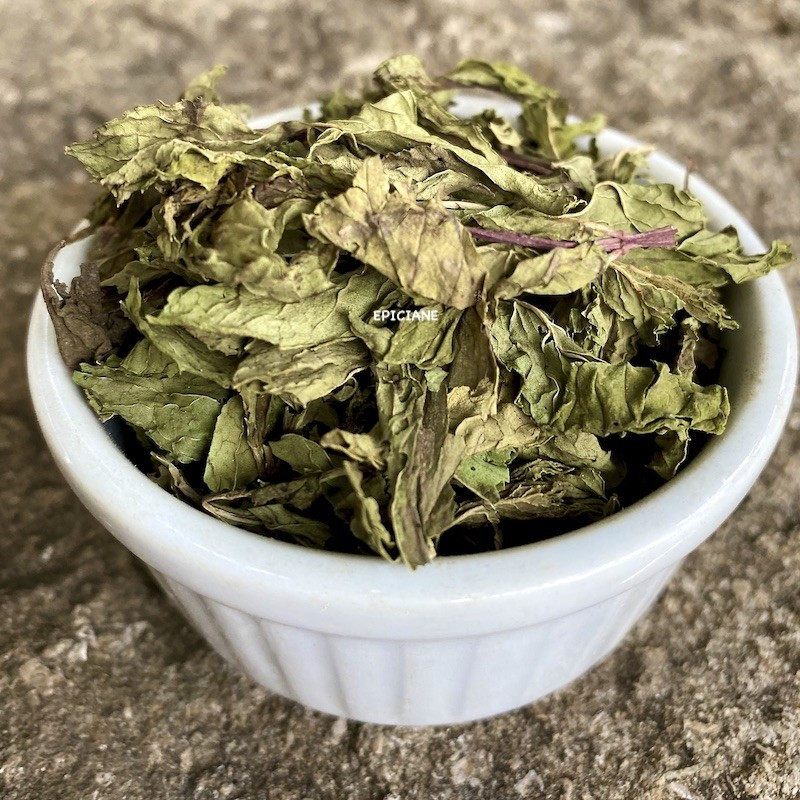
Reference: EPI20230112


It is surprisingly refreshing, full of aromas, and soft at the same time.
Particularly enjoyable in tea and infusions, it is also delicious in dishes like tabbouleh.
 Delivery
Delivery
Mondial Relay
 Returns
Returns
See conditions
 Payments
Payments
100% secure
Livré en sachet refermable
Uses in Cooking and Beyond:
The leaves of the plant are primarily used, often infused in a liquid like tea or finely chopped in salads. In salads, it’s best to rehydrate the dried leaves in a bit of warm water for a few minutes before adding them. The soft, refreshing aroma of spearmint makes it especially suited for tea and infusions. This is the mint found in the fragrant mint tea that fills the air throughout the Middle East.
Spearmint is also widely used in various culinary preparations:
It is commonly found in confectionery, chewing gum, ice cream, beverages (especially syrups), and alcoholic drinks like Bénédictine and Jet 27.
Who am I?
Origin: Egypt
Scientific name: Mentha spicata
Common names: Spearmint, spiked mint
There are many varieties of mint, all of which are perennial plants in the Lamiaceae family, known for their strong aromatic properties. They thrive in moist, shaded, non-calcareous soils.
Spearmint is very common in gardens and can grow up to 60 cm tall. It reproduces through stolons, which can make it quite invasive when it finds favorable conditions. Its deep green leaves are strongly serrated along the edges and have pronounced veins. They release a highly aromatic oil, menthol, even with the slightest rubbing of the leaves.
There are 25 species of aromatic mints originating from Asia, Europe, and Africa, and several varieties grow wild in France.
Spearmint has tonic and fortifying properties. When taken in moderate doses after meals, it also has digestive benefits. The high menthol content gives it strong medicinal properties as well.
In large doses, spearmint can be very stimulating, and it is often discouraged during homeopathic treatments.
Spearmint is said to repel certain plant pests such as aphids, ants, mosquitoes, and even rodents like mice.
A Little History:
The name Mentha comes from the ancient Greek "minthe" and the Latin "menta." Mint was found in ancient Egyptian tombs, proving that its various properties were already well known at the time.
Data sheet
Reference: EPI2301013
Reference: 1N7004306
Reference: 10M6810601
Reference: oignonblc
Reference: 7K4954201
Reference: italien
Reference: EPI230204
Reference: paella
Reference: 20731803
Reference: 20721302
Reference: baieroseE
Reference: 1N6987004
Reference: 20715403
Reference: paindepices
Reference: L0012561384
Reference: marjolaine
Reference: rosepetale

It is surprisingly refreshing, full of aromas, and soft at the same time.
Particularly enjoyable in tea and infusions, it is also delicious in dishes like tabbouleh.